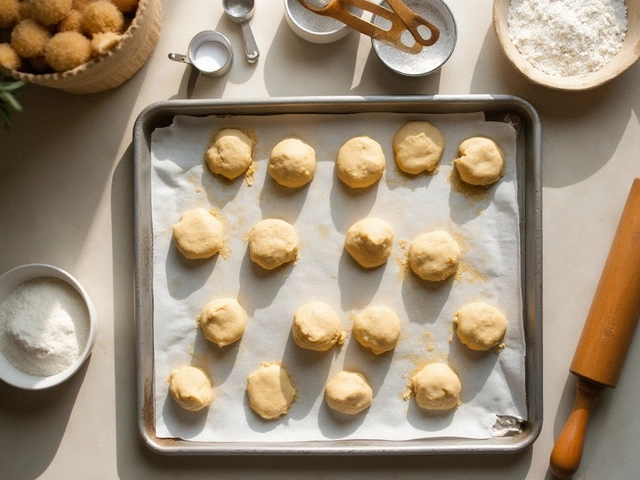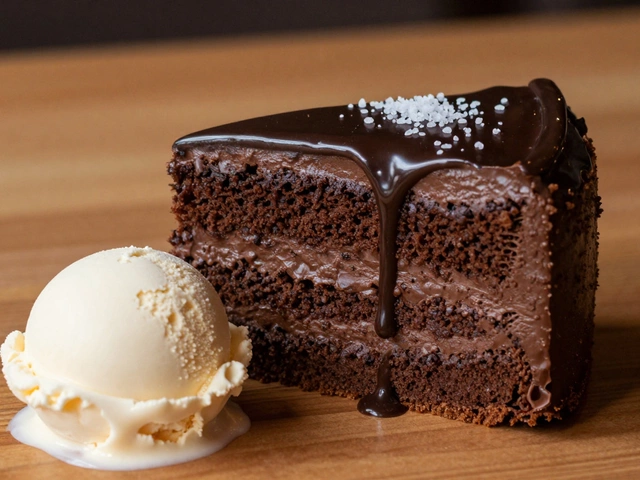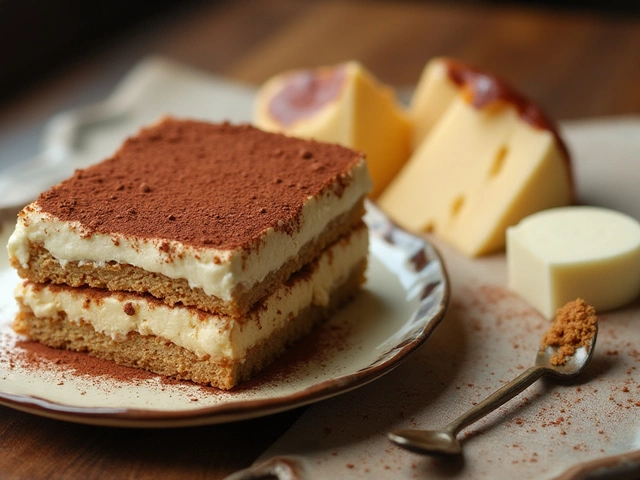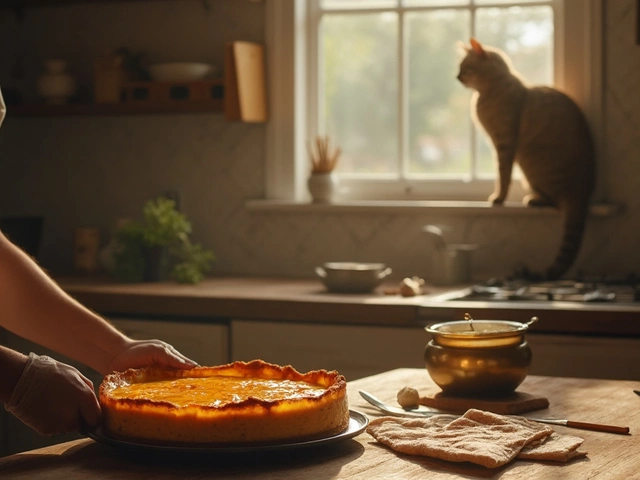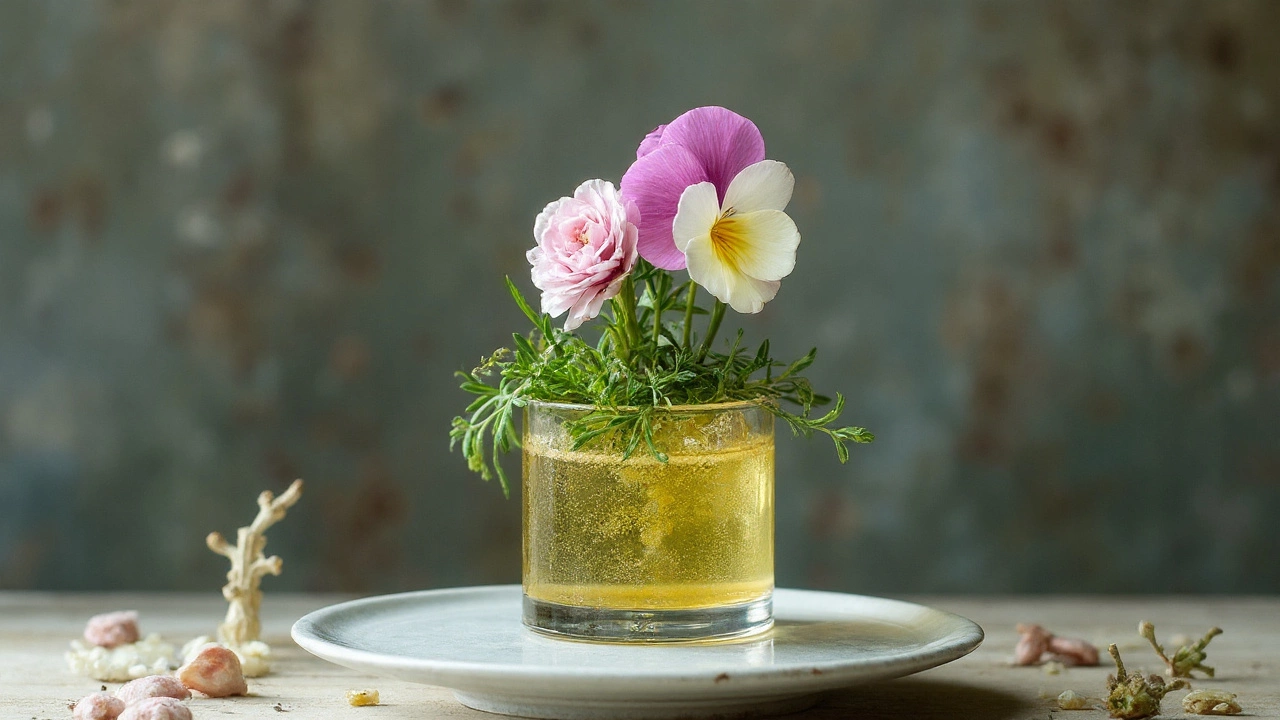
TL;DR
- The next big thing: Botanical Pressed-Flower Cakes-clean buttercream, edible blooms, gentle herb infusions, and a subtle glossy glaze.
- Why now: they’re photogenic, seasonal, sustainable-leaning, and fit weddings, birthdays, and micro-celebrations. Searches and orders have climbed through 2024-2025, especially for “pressed flower cake” and “edible flower cake” in the UK.
- Flavor direction: think lemon-thyme, honey-chamomile, black sesame-strawberry, olive oil-citrus, miso-caramel (light umami).
- Execution: two-day timeline-press and prep flowers; bake, chill, frost; apply florals; seal with a whisper-thin gel (agar or gelatin) for a dewy finish.
- Bottom line: It’s accessible, customisable, and profitable for home bakers and pros without fancy kit.
What’s the next cake trend-and why it’s Botanical Pressed-Flower Cakes
If you just want the answer: Botanical Pressed-Flower Cakes are the next wave. Picture smooth buttercream, thin pressed petals in painterly clusters, herb-steeped flavours, and a modern, just-dewy glaze. It’s the natural evolution from naked cakes and “Lambeth” nostalgia piping-pared-back, romantic, and easy to customise for any season.
Why this, why now? A few clear signals:
- Social proof without the fluff: UK posts tagged “pressed flower cake” and “edible flower cake” have grown steadily across Instagram and TikTok since late 2023. You can feel the momentum at wedding fairs and local markets-brides want “garden-like” designs that read elegant, not stiff.
- Seasonality and sustainability: Using edible garden flowers and herbs taps into the same instinct that pushed sourdough and foraging into home kitchens. You can grow or locally source many varieties (violas, pansies, calendula, borage, rose, nasturtium). No plastic toppers. Less food dye.
- Heat and practicality: UK summers are warmer and stickier than they used to be, and buttercream + pressed petals travel better than whipped cream and fresh-cut florals. Add a thin gel sheen and you also slow oxidation and petal bruising.
- Scalable skill: A steady hand beats a piping diploma here. This look is achievable in a home kitchen, yet it still commands premium pricing for weddings and events.
Credibility check: The Royal Horticultural Society publishes guidance on edible flowers (great for safety and species). The UK Food Standards Agency advises against using florist flowers (often sprayed) and recommends growing your own or buying food-grade blooms. On the ground, wedding order boards in 2025 reflect it-more pressed florals, fewer heavy drip cakes. Google Trends also shows rising interest for “pressed flower cake” and “edible flower cake” through 2024-2025 in the UK.
Two linked micro-shifts support this: subtle herb-led flavour infusions (think chamomile, thyme, lemon verbena) and lighter “soft-serve” buttercream finishes-those swoopy, ice-cream-like curves you see on modern bakes. Together, they feel fresh, not fussy.
How to create the look: step-by-step guide (with pro rules that save time)
Here’s a straightforward method you can run in a home kitchen or a small bakery. Plan on a 2-day timeline for best results.
Choose safe edible blooms. Stick to food-grade or home-grown edible varieties: violas, pansies, rose (unsprayed), calendula, cornflower, dianthus, nasturtium, borage, lavender, chamomile. Avoid florist bouquets. If in doubt, check the RHS edible flower list and cross-check with FSA guidance.
Press the flowers (12-24 hours). For tender petals: sandwich flowers between parchment sheets, then between layers of paper towel, and load them into a flower press or under heavy books. For same-day jobs, use a microwave flower press (60-90 seconds in short bursts) but watch colour fade.
Infuse your flavour. Pick one herb-led note to carry through. Examples: warm milk with chamomile and honey; simple syrup with lemon thyme; cream with lemon verbena; olive oil with orange zest. Steep, strain, and cool. Aim for “just-there” aromatics-subtlety suits the clean look.
Bake a tight-crumb sponge. You want a sturdy, level cake that won’t shed crumbs. Go for a buttermilk or yoghurt sponge, a chiffon, or an olive oil cake. Bake, cool completely, then chill layers 30-60 minutes for tidy stacking.
Make the frosting. Swiss meringue buttercream or a stable American buttercream both work. Cream cheese frosting can show faint moisture rings under petals-fine for quick events, less ideal for long display times. Tint only if you must; off-white enhances the petal colours.
Crumb coat and chill. Apply a thin coat, chill 20-30 minutes. Finish with a smooth final coat or a gentle “soft-serve” swoop using the back of a spoon. Keep it cold but not rock-hard for floral application.
Arrange the pressed flowers. Work with dry tweezers. Touch the petal backside to a dab of buttercream (or apply a whisper-thin smear on cake) and press lightly. Think in small clusters: a main spray, a secondary echo, and a few stray petals for movement. Keep stems mostly parallel to base for a flatter silhouette.
Seal the look (optional but recommended). A thin clear gel protects petals, stops colour bleed, and gives that dewy finish.
- Gelatin version: Bloom 5 g powdered gelatin in 25 g cold water. Heat 150 g water + 50 g sugar to warm (not hot), melt in gelatin, cool to room temp. Brush on thinly. Fridge 10-15 minutes, repeat if needed.
- Veg-friendly (agar): Whisk 2 g agar with 200 g water + 50 g sugar, simmer 1-2 minutes, cool until syrupy (it sets fast), brush a thin coat. Practice on a tile first.
Final chill and box smart. Chill 30-60 minutes, then box. Use a non-sweating cold pack if you must travel; condensation can cloud petals. Let the cake sit 20 minutes at room temp before serving for best texture.
Rules of thumb that keep you out of trouble:
- Colour planning: one main hue, one accent, one neutral. Example: blue cornflower (main), soft yellow calendula (accent), white petals (neutral).
- Petal thickness: thin, flat petals press best (violas). Thick petals (some roses) need longer pressing or petal separation.
- Less is luxe: 3-5 floral clusters often look more expensive than covering every inch.
- Display time: if your cake will sit out 4+ hours, keep the venue cool and use the gel finish. Avoid direct sun.
Flavour base that plays nice with botanicals (choose one path):
- Bright: lemon-buttermilk sponge, chamomile syrup, honey Swiss buttercream.
- Earthy: olive oil-orange cake, thyme syrup, mascarpone buttercream.
- Nutty: black sesame sponge, strawberry compote, vanilla buttercream (surprisingly elegant).
- Light umami: brown sugar sponge, miso caramel filling, vanilla milk frosting-miso in moderation for roundness, not savouriness.
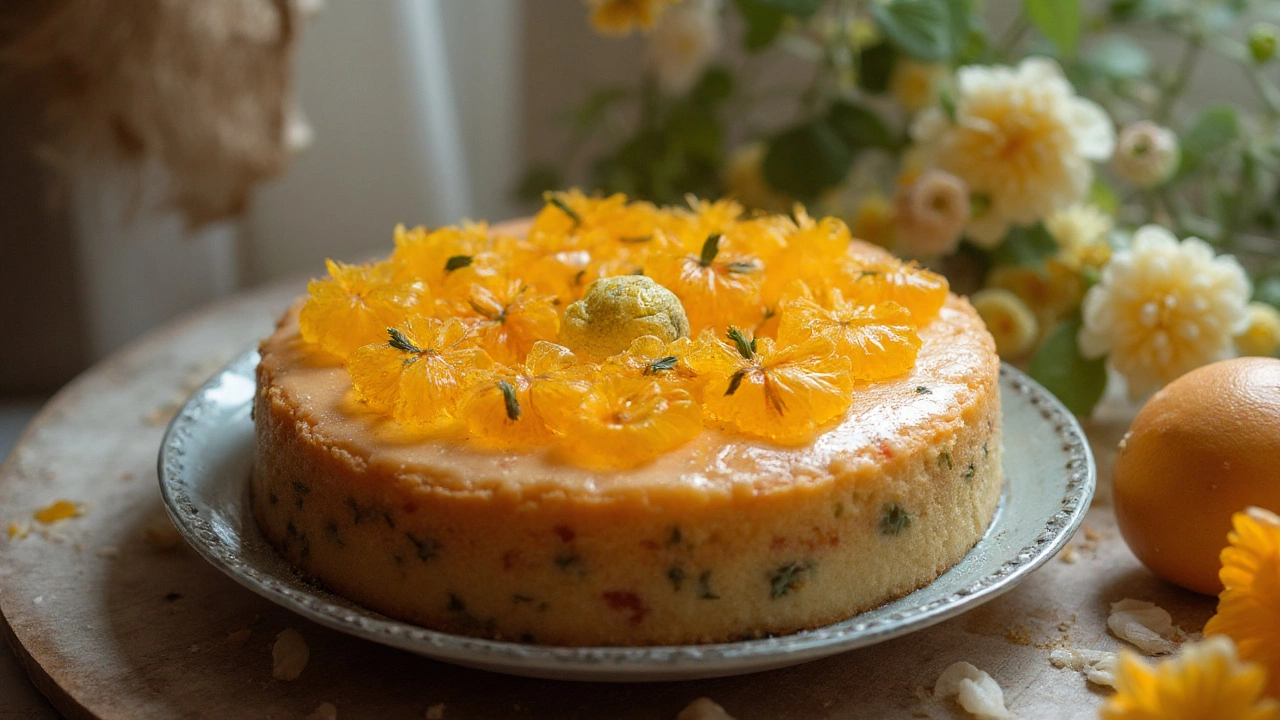
Examples, flavour maps, and a practical cost/time table
Here are three ready-to-run builds with notes on crowd appeal and difficulty. Use them as blueprints rather than strict recipes.
- Spring Garden (crowd-pleaser)
Flavour: lemon-buttermilk sponge, chamomile syrup, honey Swiss buttercream.
Florals: violas, chamomile heads, tiny rose petals.
Look: white base with pastel petals, soft-serve swirls on top, a single sprayed cluster wrapping one side.
Why it works: familiar flavours + photogenic finish = universal win. - Late Summer Meadow (bold but balanced)
Flavour: olive oil-orange sponge, thyme syrup, mascarpone buttercream.
Florals: calendula (marigold), cornflower, borage.
Look: off-white base, bolder petal contrast, asymmetrical belt of petals mid-height.
Why it works: fruity fat from olive oil makes herbs shine; colours pop in photos. - Modern Petals + Umami Whisper (for food lovers)
Flavour: brown sugar sponge, miso caramel filling, vanilla milk frosting.
Florals: rose petals and nasturtium (peppery), kept minimal.
Look: ultra-clean sides, tiny petal constellations, micro-swoops on top.
Why it works: miso adds depth, not “savory cake”; minimal petals look luxe.
Quick decision help (flavour map):
- If your event skews classic or cross-generational, pick citrus + chamomile or vanilla + berry. Keep petal palette cool and light.
- If your crowd is adventurous, layer one herb or seed (thyme, lemon verbena, black sesame) with one familiar anchor (citrus, vanilla, strawberry).
- For hot days or long displays, prefer Swiss meringue buttercream over cream cheese; it holds shape better and resists weeping.
| Build Option | Ingredient Cost (8" cake) | Active Time | Passive/Chill | Display Window | Notes |
|---|---|---|---|---|---|
| Spring Garden | ~£18-£26 (incl. flowers) | 2.5-3 hrs | 2-4 hrs | 4-6 hrs cool room | Great entry build; gentle flavours; safest crowd choice. |
| Late Summer Meadow | ~£20-£30 | 3-3.5 hrs | 3-5 hrs | 4-6 hrs cool room | Bolder colours; plan flower sourcing 48h ahead. |
| Modern Petals + Umami | ~£19-£28 | 3-4 hrs | 3-5 hrs | 3-5 hrs cool room | Use miso lightly (1-2 tsp in caramel) for balance. |
Cost drivers you can control:
- Flowers: food-grade punnets can run £6-£12 each in the UK; grow your own or partner with an edible-flower grower to cut costs and boost quality.
- Butterfat: Swiss meringue uses more butter but gives a smoother canvas; American buttercream is cheaper and fine if you don’t need ultra-smooth sides.
- Finish: a single thin gel coat is enough; more than two coats can dull colours.
Commercial tip for micro-bakeries: bundle a tasting box of three botanical flavours and include a care card about edible flowers. It reduces back-and-forth and lifts perceived value without adding labour.
Checklists, pitfalls, mini‑FAQ, and what’s next
Quick checklist: planning your first pressed-flower cake
- Pick a flavour theme that pairs with botanicals (citrus, honey, vanilla, berry, light umami).
- Source food-grade edible flowers; store them dry and cool. Press a day ahead.
- Bake a tight-crumb sponge; chill layers before stacking.
- Choose a stable frosting; keep the finish light and smooth.
- Apply petals with tweezers; design in clusters, not scattershot.
- Seal with a thin clear gel if the cake needs to sit out or travel.
- Box cold; avoid condensation by tempering before display.
Pitfalls to avoid
- Using florist flowers (often sprayed)-stick to edible, unsprayed, food-grade blooms.
- Water touching petals-moisture dulls colour; use buttercream as the glue, not water.
- Over-saturating gel-thick layers turn cloudy; brush on thin and even.
- Too much colour variety-limit to two hues + a neutral for an expensive look.
- Miso overload-if exploring umami, keep it to a teaspoon or two in caramel; you’re after warmth, not a savoury punch.
Pro tips from the bench
- Stability hack: add 1-2 teaspoons of milk powder to American buttercream for a milk bar vibe that sets a little firmer.
- Pressing speed: a microwave flower press is worth it if you’re producing weekly; colour retention is better than ad‑hoc paper stacks.
- Petal backups: keep a small envelope of pre‑pressed petals labelled by colour; humidity swings can surprise you on event day.
- Soft-serve texture: use the back of a warm spoon to swoop gentle curves on the top; it catches light beautifully under the gel sheen.
Mini‑FAQ
- What’s the best base cake? A buttermilk or yoghurt sponge holds shape, cuts clean, and pairs with herbs and fruit. Chiffon is great if you need lighter texture.
- How far ahead can I apply the flowers? Same day for the brightest colour. If you must apply a day early, chill well and add the gel finish to protect petals.
- Do pressed petals taste of anything? Violas and pansies are mild; nasturtium is peppery; calendula slightly herbal. Keep the flavour interest in the cake and frosting; treat petals like edible confetti.
- Can I skip the gel? Yes, if the cake is eaten within a couple of hours and kept cool. For weddings or outdoor events, the gel is worth the extra 10 minutes.
- What if my petals bleed colour? It happens with very juicy blooms. Press them longer, keep frosting dry, and apply a test petal on the back first.
What comes after pressed flowers?
- Translucent “dew” finishes on non-floral cakes-clear glaze over soft-serve buttercream for a modern shine.
- Seed and spice notes-black sesame, pink pepper, cardamom-with familiar fruits for balance.
- Micro cakes with botanical motifs-a return of petite “bento” sizes but grown up, with herb silhouettes and minimal petals.
Next steps for different bakers
- Home baker (first attempt): Start with a 6-inch lemon-buttermilk cake, violas only, one gel coat. Keep the palette simple and shoot in natural light for that soft look.
- Side‑hustle baker: Offer a three‑flavour tasting (citrus-chamomile, olive oil-orange-thyme, vanilla-strawberry-verbena) and two styling tiers: “Minimal Cluster” and “Meadow Band.” Clear options sell faster.
- Pro kitchen: Standardise pressed-petal packs by colour family, pre‑portion gel in squeeze bottles, and train a 10‑minute decorate-and-seal station to keep margins healthy.
If you’ve been waiting for the next big look that doesn’t require a dozen piping tips, this is it. It photographs like a dream, it’s friendly to UK seasons, and it lets your flavours lead. Among all the cake trends 2025, Botanical Pressed-Flower Cakes are the one you can adopt right now-then make unmistakably your own.

